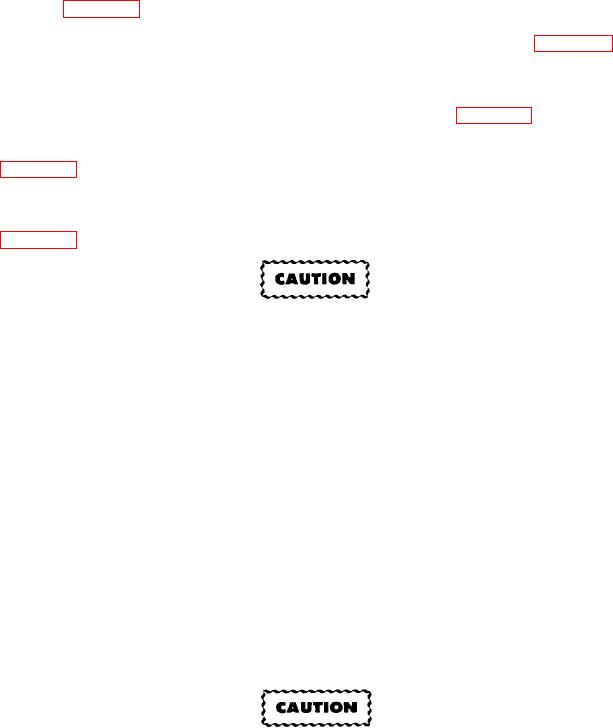
TM 5-3895-369-14
(9) Do not clean preformed packings or other rubber parts in drycleaning solvent. Wipe with clean, dry lint-
free cloth (item 12, appendix E).
(10) For exterior cleaning of frame and structural components, use detergent (item 19, appendix E), in a
solution as recommended on the container. Leave application on items surface for approximately 10 minutes before
rinsing. Rinse with hot or cold water under pressure. If available, use hot water under 80 to 120 lb (36 to 54 kg)
pressure. An ordinary garden hose may be used if no other equipment is available. If pressurized water supply is not
available, wash painted surfaces with a solution of 1/4 cup of soap chips (item 10, appendix E), to one gallon of water.
(11) Before disassembly of vehicle, clean exterior parts of vehicle thoroughly with drycleaning solvent P-D-680
(item 54, appendix E) to remove accumulated mud, tar, and grease.
(12) Electrical parts such as coils, connectors, switches, and insulated wiring should not be soaked or sprayed
with cleaning solutions. Clean these parts with clean, lint-free cloth moistened with drying cleaning solvent P-D-680
(item 54, appendix E).
Do not use gasoline, diesel fuel, or other petroleum base products to clean or preserve hydraulic system
components. Use of petroleum base products can change the lubricating quality of hydraulic oil and
cause failure or damage to equipment.
(13) When cleaning hydraulic system components, use petroleum-free solvents. Clean and dry parts thoroughly
to make sure no residue remains. If preservative coating is required before reassembly, apply a light film of the oil in
which the component normally operates. If petroleum-free solvents are not available for cleaning, use hydraulic fluid
compatible with that used in the vehicle system.
f.
Removal and Disassembly of Components.
(1) When unpacking items, remove all packing material, barrier paper, tape, plastic bags, protective caps, and
protective grease coatings.
(2) Use protective covers on open housings, lines, engine inlets, exhaust ducts, and other openings as soon as
possible after disassembly to prevent moisture and foreign matter from entering engine. Wrap all parts in clean paper
or dip parts in the oil in which the component normally operates.
(3) Cap or tape over all open tubes, hoses, fittings and engine component openings as soon as parts
are removed.
Do not use tape to close off fuel or oil openings. Sticky surface of tape can mix with fuel and oil and
cause engine malfunctions.
(4) Use suitable containers of appropriate size to catch fuel or oil when removing hoses and fittings.
(5) Remove and handle components carefully.
5-7

